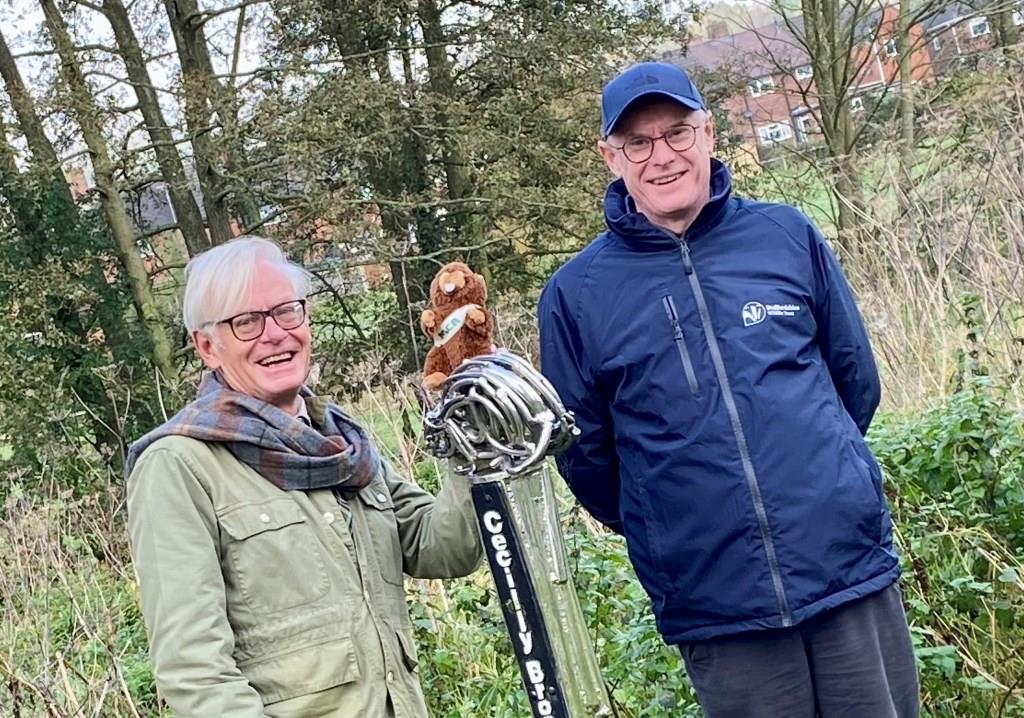 MCA mascot, Baldrik the Beaver, got a day out by the waterside this month when he was present at the official launch of the Plan for Nature at Cheadle’s Cecily Brook. The nature reserve is run by Staffordshire Wildlife Trust and is a key location for the water vole – one of the species at the top of the list under the plan to protect and enhance habitats.
MCA mascot, Baldrik the Beaver, got a day out by the waterside this month when he was present at the official launch of the Plan for Nature at Cheadle’s Cecily Brook. The nature reserve is run by Staffordshire Wildlife Trust and is a key location for the water vole – one of the species at the top of the list under the plan to protect and enhance habitats.
The Plan – drawn up by SWT and SMDC – aims to focus the various district efforts on biodiversity. It is framed by a number of provisions of the Environment Act 2012, most of which passed into law this year. Apart from helping fulfil the council’s enhanced duty on biodiversity, the Plan also gives shape to its role as supporting authority for the County’s statutory Nature Recovery Network, unveiled earlier this year.
Amid the network of laws and powers it’s easy to lose track but the pivotal role of Staffs Wildlife Trust gives comfort. SWT’s Dave Cadman is drawing up baseline assessments against which the overarching target of 30% of land ‘managed for nature’ will be measured. Defra and England are scheduled to publish guidelines ‘later this year’ but as always are running late.
Whichever measurement is employed, the target will be a tough one, and some of the means to get there difficult. SMDC can be expected to act on the limited amount of land it owns but much of that is hedged about with competing priorities – leisure and amenity use, for example.
SWT will be deft at using funding well for sites it manages or owns, including money from the successful Verges and Green Spaces Lottery bid (of which MCA is part!). The most difficult part will be with third-party landowners operating under the various woodland or Environmental Land Management Schemes.
ELM has been beset with trouble since the start, although significant numbers are now coming onto the different strands, of which the most important for the Plan for Nature may be Landscape Recovery projects. Unlike the smaller-scale Sustainable Farming Initiative and Enhanced Countryside Stewardship schemes, these offer the chance of bigger, more joined up nature recovery – the Holy Grail of environmentalists since the 2010 Lawton Review into ‘Making Space for Nature’.
One of the key elements of the Plan is the opportunity it gives to use Biodiversity Net Gain more intelligently. BNG is set to become mandatory from January 2024 (delayed from this month) and will require developers of major sites to deliver a biodiversity uplift of at least 10%. Some of this will be delivered onsite in the form of trees, hedges and ponds, for example, but that will not always be possible, or even desirable.
In those cases, developers will have to seek landowners elsewhere who are prepared to deliver the BNG. Staffs Wildlife has just unveiled a BNG portal called Net Gain Staffordshire, which will match those parties across the county (and perhaps beyond). This should enable restoration efforts to be directed towards where they are most effective in meeting long-term goals, such as those under the Plan for Nature.
Delivering joined-up nature recovery landscapes will, perhaps, require more joined-up action at SMDC than has traditionally been the case. This is particularly so as BNG will obviously be a planning issue, as well as one for other council departments. The Plan for Nature will also feed into the upcoming review of the SMDC Local Plan.
We are hoping that this month’s arrival of a new biodiversity officer at SMDC (shared with High Peak) will help in this. Should she need any help in arranging, or even a trip out to the riverbank, the supremely well-connected Baldrik is here to help!
